PFAS, the “forever chemicals” causing health problems across the country, are not just a problem in drinking water. As these chemicals leak from failing septic systems and landfills and wash away airport runways and farm fields, they can flow into streams that eventually flow into ocean ecosystems that are home to fish, dolphins, manatees, sharks and other marine species.
We study the risks of these persistent pollutants in coastal environments as environmental analytical chemists at the Institute of the Environment at Florida International University.
Because PFAS can enter the food chain and accumulate in marine plants and animals, including fish that humans eat, the spread of these chemicals impacts the environment and human health.
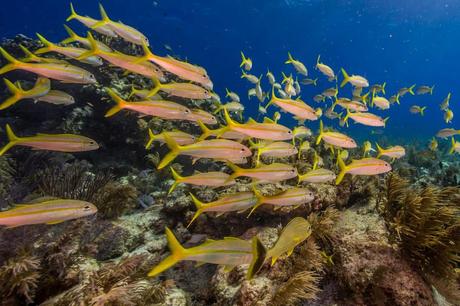 Biscayne Bay and nearby coastal areas are teeming with fish, including many species that humans eat. NPS image by Shaun Wolfe
Biscayne Bay and nearby coastal areas are teeming with fish, including many species that humans eat. NPS image by Shaun Wolfe
In a recent study, we traced the origins of PFAS contamination in Miami’s Biscayne Bay to help find ways to reduce the damage.
What are PFAS?
PFAS – perfluoroalkyl and polyfluoroalkyl substances – are a group of man-made contaminants that have been used for more than 50 years. They are found in personal care products such as cosmetics and shampoo, and in water-repellent coatings for nonstick cookware and food packaging. They are also used in adhesives and aqueous fire-fighting foams, among other things.
As these PFAS-containing products were washed down the drains and thrown into landfills over the years, PFAS chemicals became widespread in the environment. Ultimately, these chemicals found their way into aquatic ecosystems, including surface water, groundwater and coastal environments.
The same stability and resistance to degradation that makes these chemicals valuable for water- and stain-resistant products also makes them virtually impossible to destroy. Hence the nickname ‘forever chemicals’. They remain in the environment for decades to centuries.
That’s a problem because PFAS have been linked to immunological disorders, endocrine, developmental, reproductive and neurological disturbances and an increased risk of bladder, liver, kidney and testicular cancer. A drinking water study from the US Geological Survey found that these chemicals are present in at least 45% of tap water in the US, and a large percentage of Americans are now believed to have PFAS in their blood. The EPA finalized the first federal drinking water standards for PFAS on April 10, 2024.
Studies have also found PFAS in a wide range of marine animals, including in the livers of otters and in the eggs of seagulls, as well as in freshwater fish in the US. These chemicals have already been shown to affect the immune system and liver function of fish. and marine mammals.
How PFAS enter the marine environment
When we started tracking the sources of PFAS in Biscayne Bay, we found hotspots of these chemicals around the exits of urban canals – especially the Miami River, Little River and Biscayne Canal. We found that each of these channels is a major point source contributing to the presence of PFAS in offshore areas of the Atlantic Ocean.
A major source of those PFAS is sewage contamination from faulty septic systems and wastewater leaks in urban areas. This is evidenced by the presence of the types of PFAS – such as PFOS, PFOA, PFPeA, PFHxS, PFHxA, PFBA and PFBS – used as stain and grease repellents and in carpets, food packaging materials and household products.
Another significant source is the predominance of 6-2 FTS in the Miami River – 6-2 FTS is a fluorotelomer PFAS commonly used in aqueous film-forming foam found in military facilities and airports. The Miami River flows past rail yards, industries and Miami International Airport on its way to Biscayne Bay.
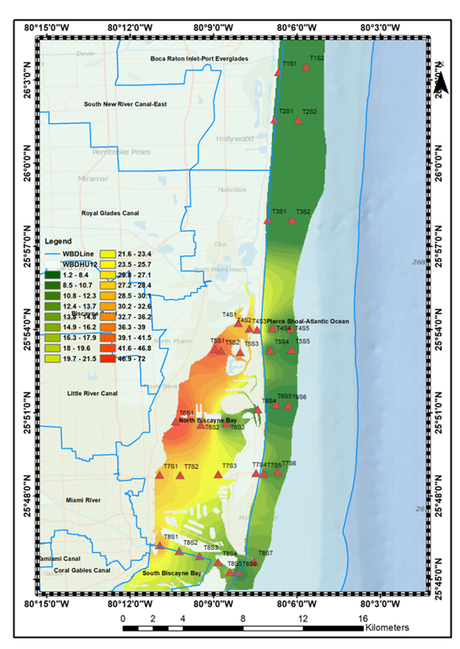
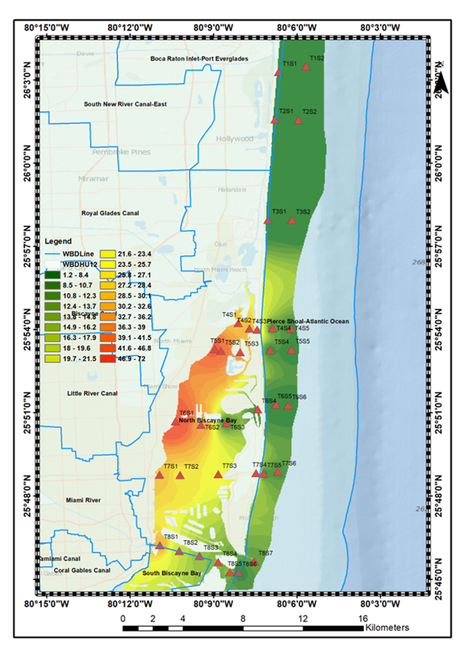 A map from the study shows PFAS hotspots near canals that transport water from the city. Red indicates higher PFAS concentrations, measured in nanograms per liter. Green indicates lower, more dilute PFAS concentrations. CC BY-ND
A map from the study shows PFAS hotspots near canals that transport water from the city. Red indicates higher PFAS concentrations, measured in nanograms per liter. Green indicates lower, more dilute PFAS concentrations. CC BY-ND
We also used a model to predict how ocean currents would spread PFAS coming from those channels to coastal areas. We found that PFAS concentrations were highest near the canals, decreased along the bay, and decreased as the ocean water became deeper and saltier, making PFAS less soluble in water.
Overall, PFAS concentrations were nearly six times higher in surface water near land, compared to deep-water samples collected 4 to 10 meters below the surface in the bay and offshore. That suggests the biggest risk comes from pelagic fish that hang out in surface waters, such as mackerel, tuna and mahi-mahi.
How marine organisms are at risk
The levels of PFOS and PFOA in our study were below the Florida Department of Environmental Protection advisory levels in surface water for human health exposure. However, the advisory levels may not protect human and marine life.
They do not take into account that these chemicals accumulate in the food chain. A higher concentration at the top of the food web means that PFAS could pose a greater risk to dolphins, sharks and people who consume fish.
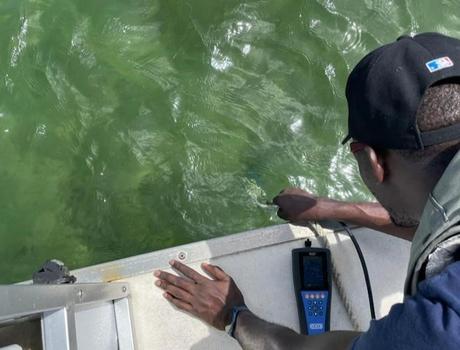
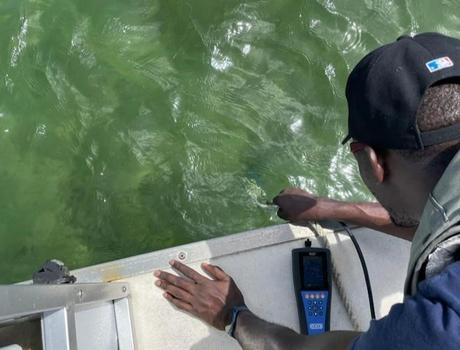 Olutobi Daniel Ogunbiyi, author of this article and lead author of the study, takes water samples in Biscayne Bay. CC BY-ND
Olutobi Daniel Ogunbiyi, author of this article and lead author of the study, takes water samples in Biscayne Bay. CC BY-ND
Many types of PFAS identified in our samples are unregulated and their potential toxicity is unknown. We believe there is a need for federal and state agencies to develop guidelines and implement action plans to protect people and aquatic life in Biscayne Bay.
What you can do about it
Given the persistence of PFAS and their widespread use, it is not surprising that these perennial chemicals are found in nearly all water systems in South Florida and occur in coastal waters around the world.
As scientists search for effective and efficient ways to eliminate and remove these chemicals from water, food and the environment, people can limit their use of PFAS-containing products to reduce the amounts of these chemicals entering the marine environment.
Here are some common products containing PFAS to look out for: Teflon nonstick pans; food packaging for fast food and popcorn; waterproof clothing and cosmetics; and treated carpets.
This article was updated on April 10, 2024, with the EPA issuing the first federal drinking water standards for PFAS.
This article is republished from The Conversation, an independent nonprofit organization providing facts and trusted analysis to help you understand our complex world. It was written by: Natalia Soares Quinete, Florida International University and Olutobi Daniel Ogunbiyi, Florida International University
Read more:
Natalia Soares Quinete receives funding from the National Science Foundation.
Olutobi Daniel Ogunbiyi receives funding from the National Science Foundation, awarded through the FIU Institute of Environment and the Center for Research and Excellence in Science and Tech.
